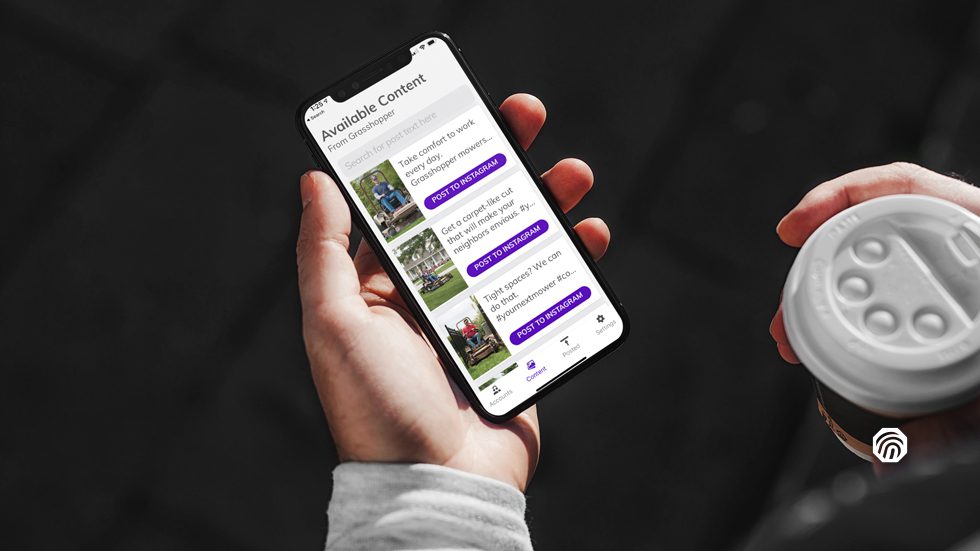TAMPA, FL – ThumbStopper, the leader in social media automation and intelligent syndication for multi-location brands and their retailers, announced the launch of their new mobile app, ThumbStopper Pulse. With the ability to easily review, revise and syndicate content directly from the manufacturers and brands that they sell, ThumbStopper Pulse is designed as an on-the-go connection point for busy retailers, enabling businesses already subscribed to the ThumbStopper Brand Manager to influence more channel interaction, communication, and content personalization through top social platforms.
Created with multi-brand dealers and retailers in mind, ThumbStopper Pulse’s initial feature set includes the ability to easily switch between brands that they sell and the platforms they use to promote their business. ThumbStopper Pulse then will highlight available branded content to syndicate across major social channels, including Instagram and Facebook.
“We developed ThumbStopper Pulse to enable our retail customers to better control the branded content they syndicate and the channels that they choose to syndicate to. By putting more choice in the hands of our retailers, we can ensure a better experience for them and more meaningful content shares, leading to greater visibility for our brand partners and better responsiveness from our retail customers. This connectivity will also pave the way for many future features, including easier communication between small businesses and their consumers, the ability to address reviews easily and efficiently, and meaningful social metrics that provide a quick pulse on the state of their social presence, all in the palm of their hand,” said Matthew Brown, CEO of ThumbStopper.

Pulse makes it easy for retailers to manage content across all the brands they sell
Ease of use was top-of-mind in developing ThumbStopper Pulse. Within three taps, retailers can change their brand account and navigate through available brand approved and yet-to-post content. Additionally, the app enables retailers to further control their local social presence by enabling the native features of social platforms, like filters and location tagging.
“Our brand partners and our retailer clients have come to rely on ThumbStopper’s hand-free approach, and that’s not going away,” says Director of Account Management, Carissa Mastry. “ThumbStopper Pulse was built with retailer feedback at the forefront of development. We’ve heard the feedback from our retailers and designed the app to allow more control at the retailer level for those that want it, without compromising our key value and core belief in syndicating brand content at the local level, 100% hands-free for our retailers. I see this as a valuable enhancement and I’m excited to deliver it to our brand partners and retailer clients.”
ThumbStopper Pulse is available immediately and at no additional cost for current customers subscribed to ThumbStopper’s Brand Manager™ via both the Android and Apple App Stores. ThumbStopper Pulse is supported on all major devices, including iPads and tablets. For more information on how to better manage your local social presence or what you can do as a brand to better support your local retailer network through social syndication, please visit thumbstopper.com.
About ThumbStopper
ThumbStopper® helps brands and retailers generate micro-moments of engagement through the curation, segmentation, and syndication of high-value content across leading social media platforms. ThumbStopper’s Brand Manager™ seamlessly connects branded digital assets to your most likely consumers via native organic social posting and advertising at scale.






